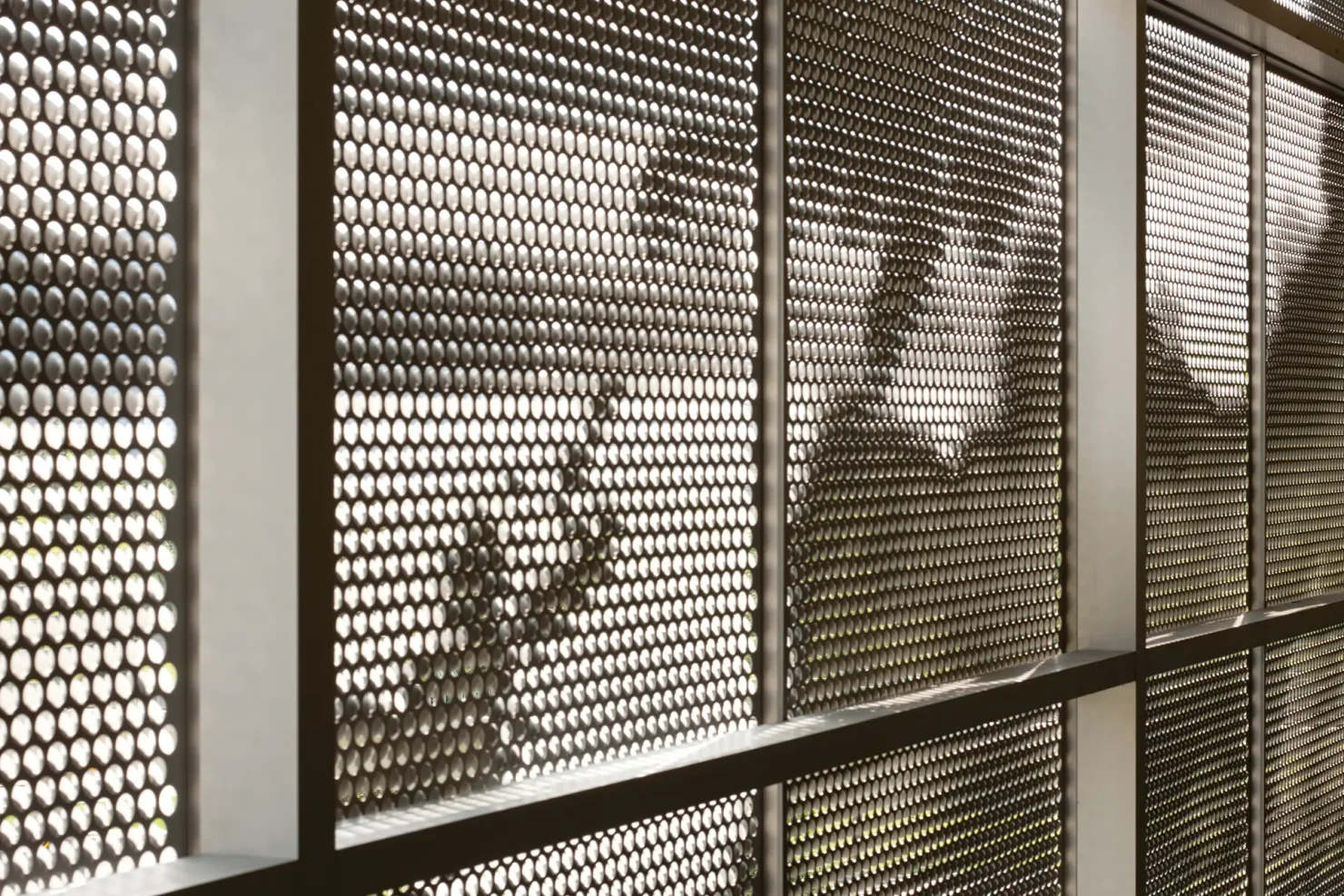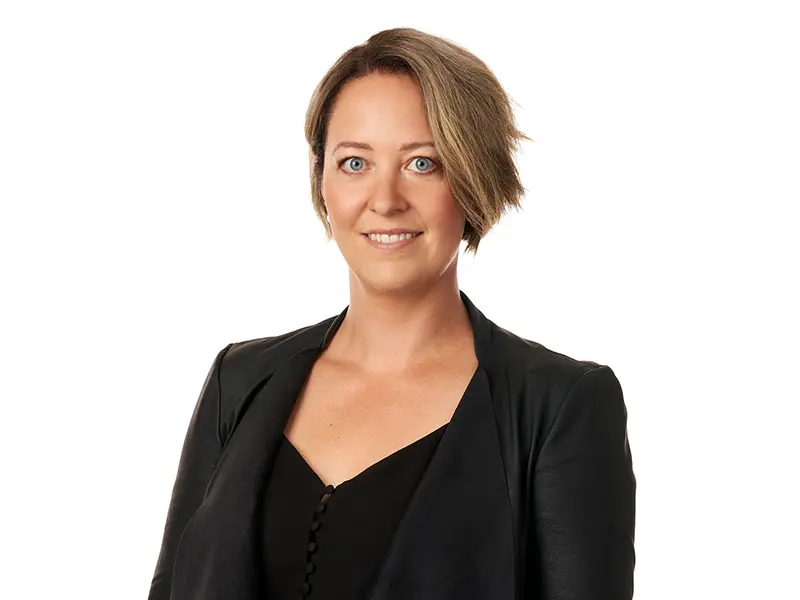A 3-part series exploring the intersection of craft, material, and innovation
Light pours in through the pyramid-shaped skylight, the wood beams casting sharp shadow lines across the concrete walls and floor. The striped pattern transforms the triangular space into an abstract image, resembling a Frank Stella painting. Descending the entry stairs, memories of the space flood back and I am transported six years earlier when my then fiancé and I had our engagement photos taken at this very spot. I still chuckle when I think that we chose a parking garage as the backdrop setting for that special day.
However, the SAIT Parkade is not your typical underground parking facility. Located centrally on campus, the parkade carries many functions besides vehicle storage. Bridging the campus through a series of pedestrian corridors, the box-like structure is nestled into the topography and crowned with a soccer pitch. The exposed southeast corner is wrapped with a perforated metal screen, a pixilation created by the artist Roderick Quin. The bent metal tabs shimmer in the sunlight, portraying a soft image of clouds crossing the prairie sky.
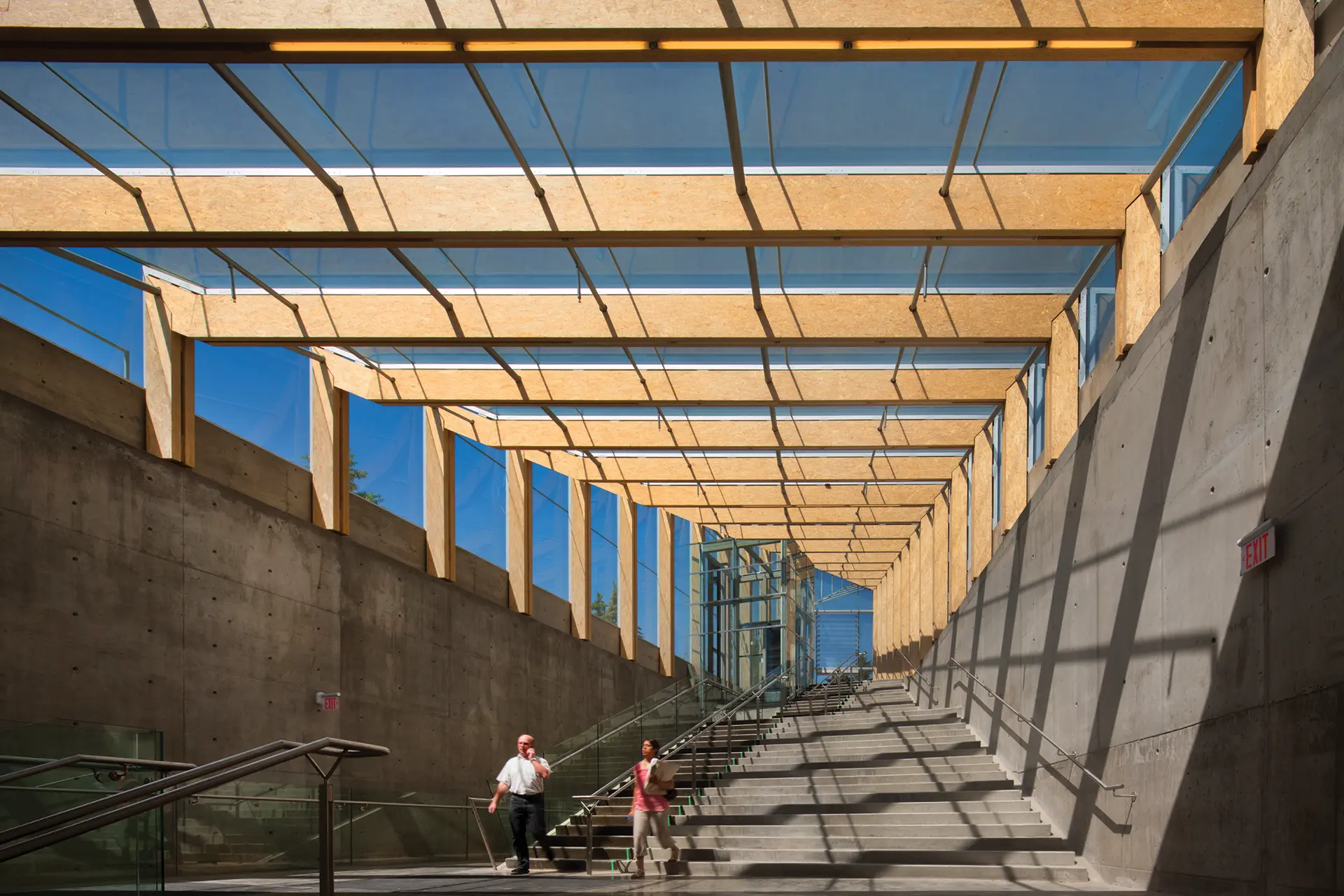
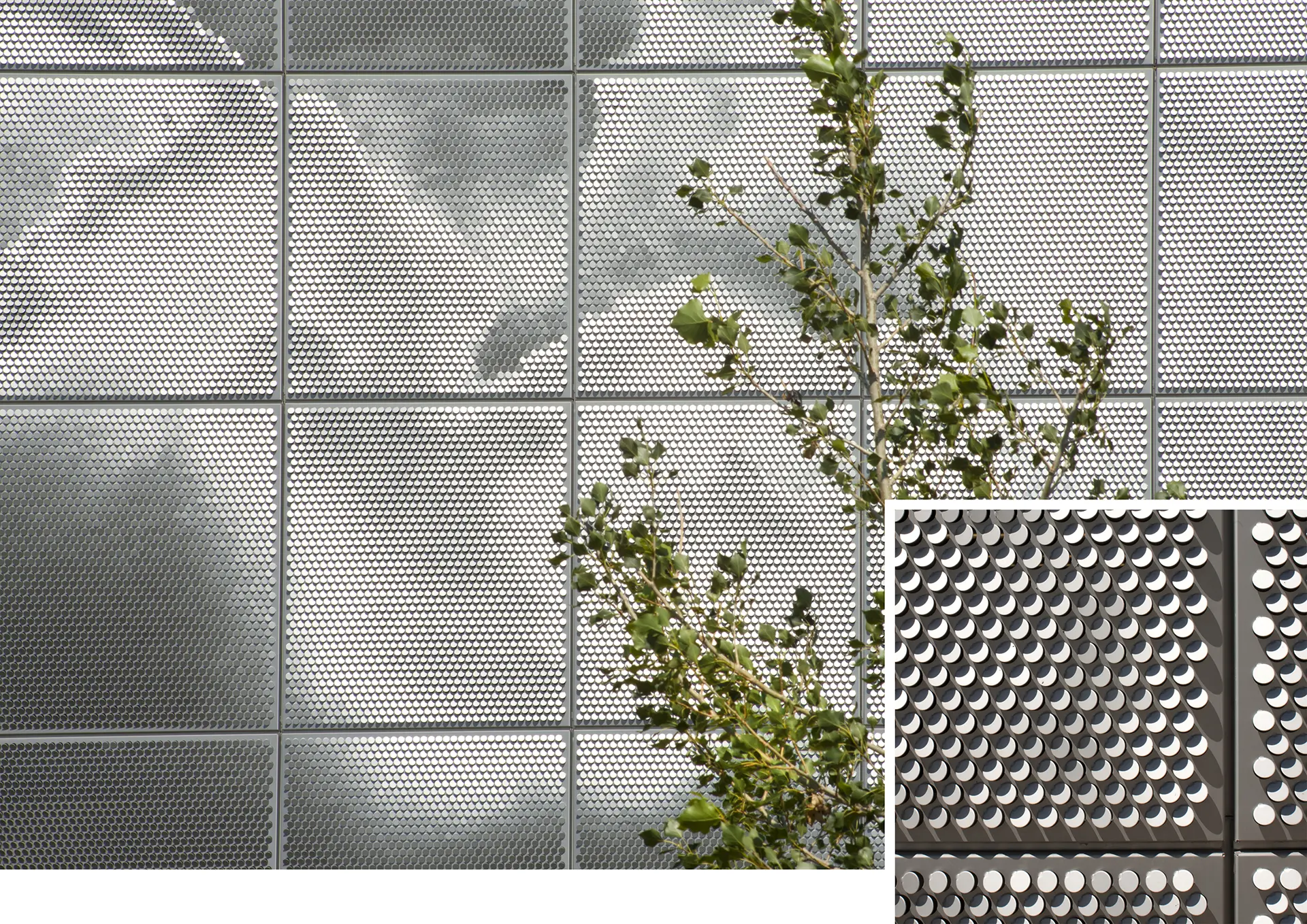
Building narratives
One of the most notable mythologies in history is the legendary Tower of Babel. An allegory of the consequence (i.e., confusion of language and culture) when a collective ego reaches too far into the heavens. The compelling image of an ever-rising tower sparks the imagination and continues to inspire artists, architects, and popular culture. This pursuit of transcendency is continuing; with futuristic cities being carved across the Saudi Arabian desert (NEOM) to serious resources being used for the colonization of mars.
Conceptual narratives have immense power to delight, inspire, teach, and feed our emotions. Within the uniqueness of cultures, we find a shared tradition of using the built environment as a canvas, weaving together moments of triumph, struggle, and spirituality. The buffalo hide teepees of the Tsuut-Ina Nation are adorned with pictographs of battles, hunting expeditions and significant journeys that become passed down as daily cultural reminders. Like many other First Nation cultures, they lean heavily on storytelling to shape their cultural identity.
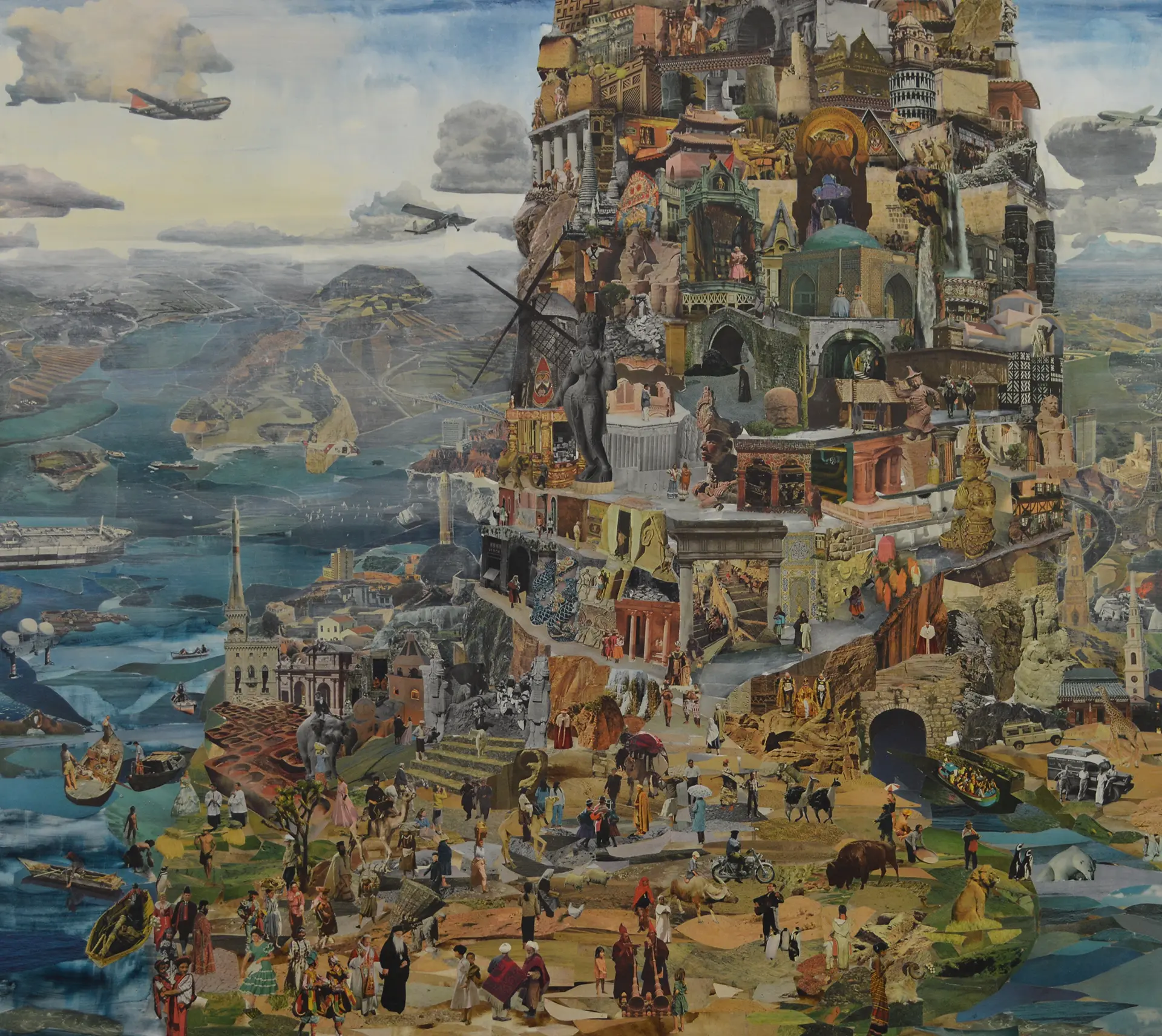

Finding distinction through craft
Photograph of the Calgary Saddledome, public domain
When recognize-ability is the objective, architects traditionally leaned on sculpture and pictorial iconography to reduce a building to a concise, and memorable image. However, municipalities, developers and architects are shifting towards a more holistic outlook, one that addresses the wider social and sustainability concerns. In response to these necessary efficiencies, building envelopes are ridding themselves of articulation, stepped facades, curves, and impracticalities. Therefore, artists and architects are finding other avenues to bring cultural expression back into buildings.
The University of Calgary Downtown Campus building is instantly recognizable through this simple, yet sophisticated approach. Diamond-shaped tiles clad the box-like structure, producing a unique scale-like texture across its gently curved building faces. At the parkade, this cladding gives way to a kinetic installation, an artistic collaboration between Heavy Industries and Ned Kahn. The pin attached stainless-steel flappers react to wind patterns, breathing life into the urban experience. This cost-effective technique avoids complex geometries and structural gymnastics, while still conveying originality and purpose. Through the revival of partnerships with local artists and craftspeople, architecture can find distinction in cultural expression, diversity, and storytelling.
University of Calgary Downtown Campus façade
Community building through the art-process
Bringing a concept to life is a collaborative process, involving a diversity of ideas, skills, and cultural representation. Summarizing this participatory action, the poet Octavio Paz writes, “This imagination is social: in its perpetual movement, a back and forth between beauty and utility, pleasure and service, the work of craftsmanship teaches us lessons in sociability.” A plurality of artistic expression, this journey is like a house of mirrors, the output reflecting our societal strengths, weaknesses, and strangeness.
Today, artistic self-expression has found a platform with social media; Instagram, TikTok and YouTube providing individuals with an unprecedented opportunity to share their creative work to a global audience. Setting aside the creative drawbacks, we can find benefits in the open exchange of ideas between like-minded individuals, and space for self-promotion. However, globalization of expertise has given rise to international competition, with local studios being overlooked in place of ‘world-renowned’ specialists. Decisions are often made by people illiterate to the cultural language; disconnected from the local history, environmental concerns, and people. In response, we are seeing a growth of grassroot artistic groups focused on celebrating their community's stories and values.
One example is Calgary's BUMP Festival, a community-led street art festival that transforms the city’s blank walls into rich tapestries. Bringing warmth and engagement throughout the city, these murals are typically located within otherwise sterile and soulless spaces. With more engagement from within, we are seeing that citizens want authorship in their community's cultural identity and future.
Mural painted by local artists Lacey and Layla

